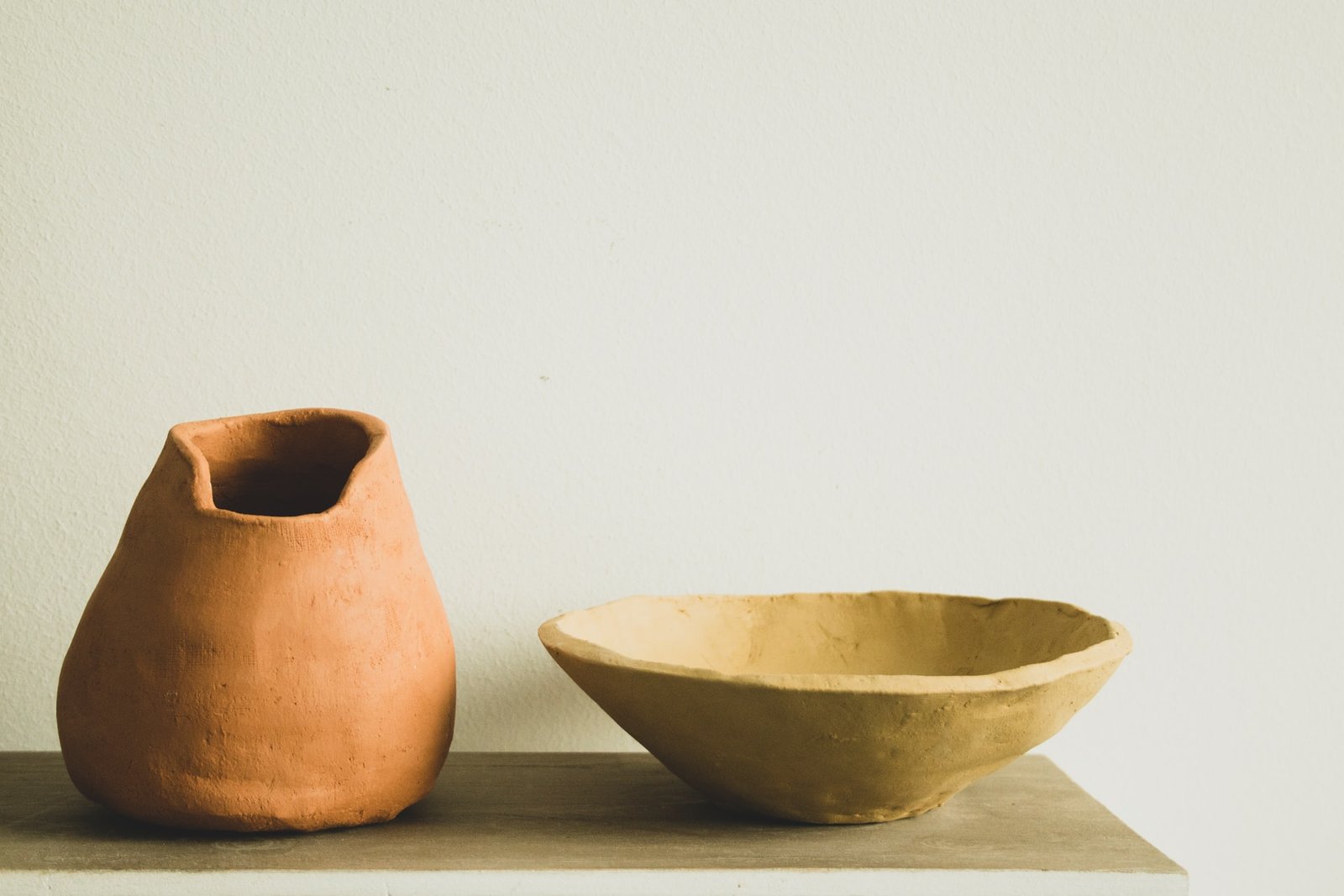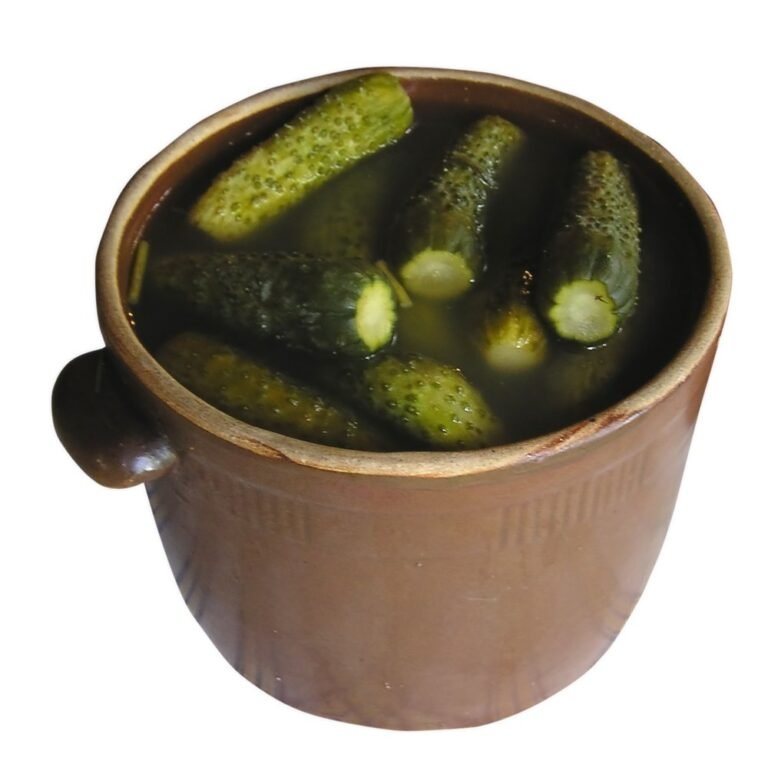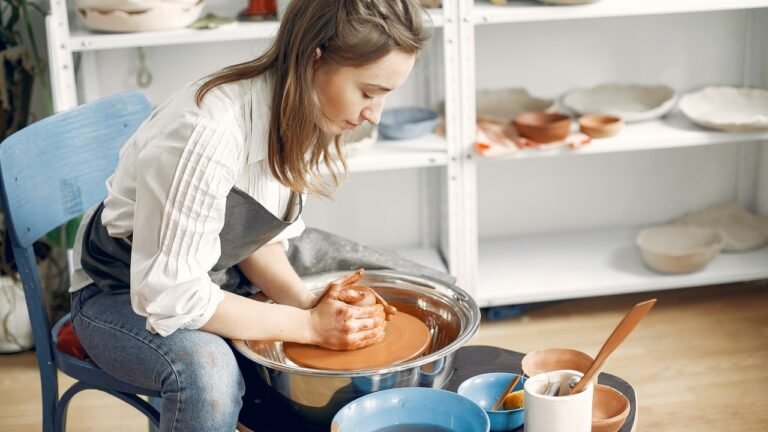Can You Use Red Clay For Pottery? Quick Facts
Red clay also known as common surface clay or Ultisol is the most abundant among other types of clay. Tainted with varying quantities of iron and other minerals, one unique property of Red clay is its reasonably good mechanical properties due to the cementation of free iron oxide present in it. Also, it is popular for its high porosity, but the question is, can red clay be used for pottery?
Red clay is used for the production of terra cotta pottery and other varieties of pottery. Iron and other mineral impurities present in red clay allow it to achieve optimum hardness at low temperatures (950°C and 1100°C). Ceramics produced from Red clay are softer, porous with extensive clay colors after firing, have low drying shrinkage, and are easy to stain.
I will explore the characteristics of this abundant resource and how they each affect its suitability for pottery making. Red clay is readily available and is useful for making numerous pottery wares.
Why Is Red Clay Suitable For Pottery Making?
Red clay is most remarkable for its highly plastic nature, I find it easy to mold it into any shape I desire. Plasticity is important in ceramics as it determines the clay’s ability to change shape without any propensity to return to its old form (elasticity).
I have discovered from my experience that as the plasticity of a clay increases so does its drying shrinkage, and with that increase comes a higher probability of drying cracks. Highly plastic clay can contain 25% moisture content or more, these will not only have high shrinkage but will dry more slowly. When working with red clay, I avoid drying cracks by reducing the drying shrinkage to a point just before the clay becomes too non-plastic for molding, which is about 5% shrinkage.
The high green strength of red clay pottery makes it immune to breakage or damage during production. This green strength is dependent on the degree of mass compression in clay and the surface area of the particles. It is a major reason why I enjoy molding with red clay since it makes production quicker and results in stronger and high quality ceramics.
Also, red clay is good for throwing, hand-building, and sculpting on the potter’s wheel depending on the technique that works best for you. This versatility is due to its malleability and ability to retain its shape. It allows you to be more creative while molding.
The most popular method of processing is to take a reasonable amount of refined clay and then mold it to the desired shape. On the other hand, you can make your desired object with one or more molds. After drying, you place your piece in a kiln or on a combustible material in a pit, and fire it.
Furthermore, because of its plastic nature, there is little need for water during production. As such, I can recommend it for a beginner since it is more user-friendly.
Due to the high surface area of red clay, the resulting ceramic remains porous after firing. If you want to make a vessel that holds liquid, like a cup or flower vase, you will need to glaze the red clay pottery with lead-free glazes, stoneware glazes, Raku glazes, or any other type of glaze to make it water-resistant.
Pottery is one of human’s earliest inventions. Red clay was used by ancient potters to produce ancient pots. It has an ongoing history from the period of the ancient Greek potters to date. Because it is a commonly naturally found form of clay, I use it most often for my projects.
Red clay pottery is still quite popular in the 21st century, most of which are commercially produced wares. These ceramics are heatproof and cold proof and thus are used for cooking and freezing including serving.
What Can You Make With Red Clay?
Red clay can be shaped into anything, from flower vases to beautiful mugs, beautiful pieces of art, coffee pots, dishes, wall arts, pencil holders, picture frames, and even jewelry, as far as your creativity can go. Red clay pottery can be left glazed or unglazed depending on the type of use of the finished product. Unglazed red clay pottery such as terra cotta, is porous and not watertight. Therefore, it is not suitable for vessels that hold liquids like flower vases and mugs.
Instead, I use it for sculptures, plant pots, tiles, planters, and many more.
The terracotta army, for example, is a remarkable piece of art made from red clay, dating back to 221 B.C. It is an array of terracotta sculptures characterizing the armies of Qin Shi Huang, the first Emperor of China. This collection includes more than 7,000 terracotta warriors, horses, chariots, and weaponry sculpted to guard the emperor in the afterlife.

Other such creative sculptures can be found around the world in history. Among the Greeks, Chinese, Africans, and Europeans just to mention a few.
What Is Red Clay Used For In Ceramics?
Although it can be used to create almost anything, terra cotta pots, roof tiles, and low-fire ceramics are majorly what I usually produce from red clay. In relation to industrial uses, it is mostly restricted to tiles and bricks.
I particularly love red clay for its richness and the different colorful patterns available in low-temperature ranges. Working with red clay will require that you experiment and explore, which will eventually help you move in a direction more appropriate to your evolving creativity. Primarily, you can try covering the red clay layer with slips and underglazes.
Over the years, I have found most low-fire white clay less satisfying in terms of surface, as they are not as strong as terra cotta.
Red clay pottery is mostly not fired to the point of vitrification. The body of the mold can be entirely coated or embellished with slip (a combination of fluid clay applied before firing), or it can be glazed. If you intend to produce red clay pottery for practical or decorative reasons, it is important that they are glazed.
I reduce the level of porosity of red clay (an attribute that makes it ineffective for storing liquids in its unglazed form) by covering the fired object with well-grounded glass powder suspended in water. Afterward, I fired a second time. During the firing, the particles coating the surface melts into an unformed glasslike layer and it seals the pores of the form.
Sometimes I coat my work with a transparent lead glaze. If this kind of glaze is applied to a cream-colored pottery object, the product is called creamware. Another type of glaze that I use is opaque white tin glaze, which used to be called tin-enameled, or tin-glazed, earthenware, majolica, faience, or delft.
Red clay is great for pottery in all its forms. Its plasticity and strength are big advantage to me as a potter. Not only is it readily available, but it is also easier on the hand.







